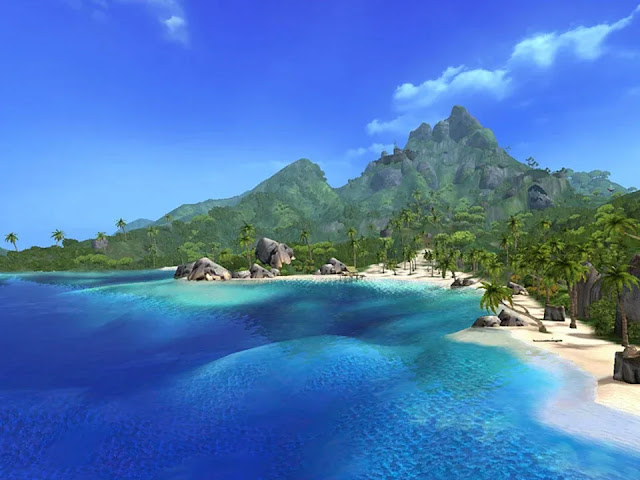Far Cry (2004): The Review
Overview
The original Far Cry kicked down the doors of the FPS genre in 2004 with ambitious open environments, smart enemy AI, and jaw-dropping visuals for its time. It blended tropical island aesthetics with intense, tactical gunplay and sci-fi weirdness in a way that felt totally fresh. Though its storytelling may feel thin by modern standards, its technical achievements and gameplay sandbox still hold a legacy-worthy place in shooter history.
Score: 8.5 out of 10
The Positives ✅
Far Cry was a technical marvel back in 2004, and even today it’s easy to appreciate how revolutionary the visuals were for the time. The game’s massive draw distances, dynamic lighting, and lush, living environments made it feel like a true next-gen leap. That first glimpse of the ocean shimmering under the sun? Unreal.
But Far Cry wasn’t just a pretty face, it gave players a lot of freedom in combat. Whether you wanted to snipe from a cliff, sneak through the jungle, or just go full Rambo, the game rarely forced your hand. That open-ended design still holds up surprisingly well. The enemy AI added to the tension too, soldiers would flank you, call for backup, and actually react to your presence in ways that made firefights feel dynamic rather than staged.
The setting really sold it all. This tropical island paradise with its mix of beautiful beaches and shady military compounds made for a world that was both gorgeous and threatening. And with a solid lineup of guns, vehicles, boats, and even hang gliders, you had the right tools to survive whatever was lurking beyond the palm trees.
The Negatives ⚠️
For all its technical brilliance, Far Cry wasn’t without its stumbles. The most divisive? That sudden sci-fi shift halfway through. One minute you’re tactically sneaking past mercs, the next you’re fighting mutant monsters straight out of a B-movie. It’s a bold pivot, but not one that worked for everyone—it breaks the grounded tone the game started with.
Then there’s the brutal difficulty spikes, especially in the later chapters. Some missions go from manageable to maddening in seconds, and without a smooth curve, it can feel more punishing than fun. Combine that with a dated checkpoint system, and you’re often stuck replaying the same section over and over, just trying to survive long enough to reach the next save.
The story? Well… Jack Carver isn’t exactly iconic. The plot sticks to generic action clichés, never really building momentum or emotional investment. And even though the game broke ground visually, some of the controls and aiming now feel clunky by today’s standards, especially if you’re revisiting it on a modern setup. It’s a game that shows its age in both the narrative and the mechanics.
The Experience 🎮
Far Cry (2004) is one of those games that hits you with “whoa, this was 2004?!” the moment you load in. It’s bright, open, and deadly, equal parts tropical paradise and total chaos. I remember getting wrecked over and over again by enemies that actually flanked me (rude), and then suddenly fighting mutants like I’d wandered into a different game entirely. It’s definitely got that mid-game genre twist energy.
Took me around 12–14 hours to beat the main story, but it felt longer thanks to some pretty brutal late-game difficulty spikes. Still, the sense of freedom, the way you could approach combat however you wanted, and the sheer ambition of it all? That stuff sticks. It may be clunky in places now, but Far Cry was ahead of its time—and honestly, kind of a blueprint for open-world shooters today.






Comments
Post a Comment